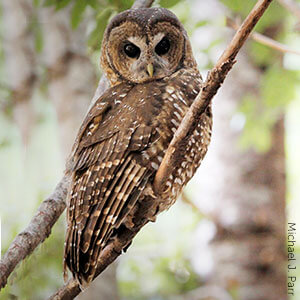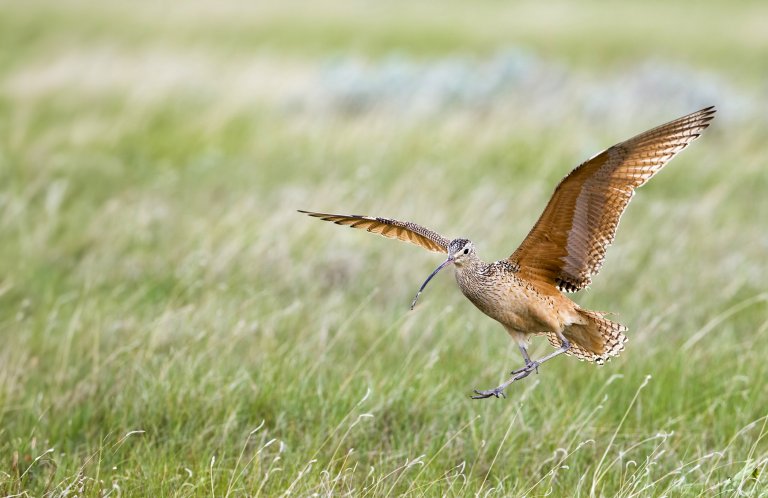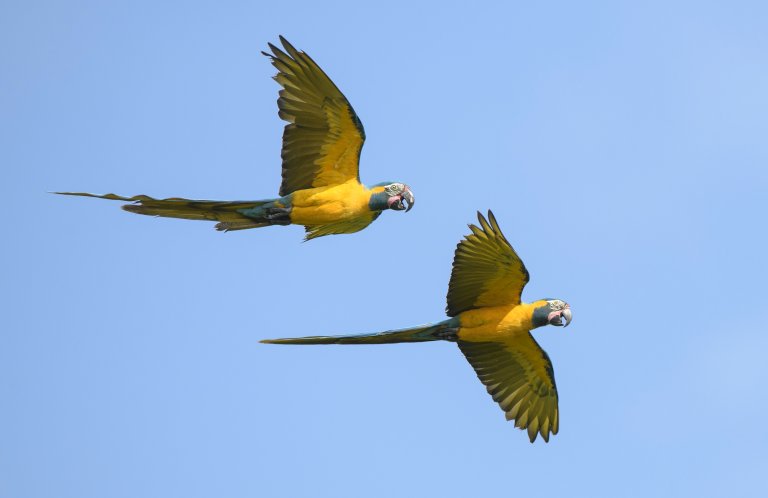U.S./Canada Population Estimate: 120,000
Population Trend: Increasing
Habitat: Grasslands, deserts, and agricultural fields
Threats: Habitat loss, vehicle collisions
Note: Besides excellent vision, Barn Owls are extraordinarily sensitive to sound; their ability to locate prey by sound alone is the best of any animal ever tested. |
Barred Owl 
U.S./Canada Population Estimate: 3,200,000
Population Trend: Increasing
Habitat: Mixed, mature forests
Threats: Deforestation
Note: Barred Owls expanded their range dramatically in the 20th century to include western forests, where they now compete with Spotted Owls. |
Boreal Owl U.S./Canada Population Estimate: 1,700,000
Population Trend: Unknown
Habitat: Boreal forests
Threats: Deforestation
Note: While it's not uncommon for female owls to be larger than males, the difference is most pronounced in Boreal Owls; female Boreal Owls occasionally weigh twice as much as males. |
U.S./Canada Population Estimate: 1,100,000
Population Trend: Declining
Habitat: Grasslands
Threats: Habitat loss, pesticides, vehicle collisions, introduced predators
Note: Burrowing Owls live underground and hunt on the ground during the day. |
U.S./Canada Population Estimate: 680,000
Population Trend: Declining
Habitat: Eastern forests
Threats: Deforestation
Note: Eastern Screech-Owls are typically monogamous, breeding together for life. |
U.S./Canada Population Estimate: 40,000
Population Trend: Unknown
Habitat: Desert scrub
Threats: Habitat loss
Note: The Elf Owl is one of the world's smallest owls, typically weighing less than 45 grams. Its range extends from Mexico into areas of the southwestern U.S. |
Ferruginous Pygmy-Owl U.S./Canada Population Estimate: <1,000
Population Trend: Unknown
Habitat: Tropical dry forests
Threats: Habitat loss, land conversion, and urbanization
Note: The Ferruginous Pygmy-Owl is one of the most widespread birds of the Neotropical lowlands; its range includes the southern tip of Texas and the south-central edge of Arizona. |
U.S./Canada Population Estimate: 11,000
Population Trend: Declining
Habitat: Western forests
Threats: Habitat loss, possibly pesticides
Conservation Status: PIF Yellow Watch List "R"
Note: Unlike many other owls, Flammulated Owls subsist almost exclusively on a diet of insects. |
Great Gray Owl U.S./Canada Population Estimate: 95,000
Population Trend: Unknown
Habitat: Boreal forests
Threats: Deforestation
Note: With a wingspan stretching up to five feet, the Great Gray Owl is one of the largest owls found in the United States. |
U.S./Canada Population Estimate: 3,900,000
Population Trend: Declining
Habitat: Wide variety of habitat, including forests and fields
Threats: Pesticide poisonings, occasional illegal hunting
Note: Great Horned Owls hunt Ospreys, Peregrine Falcons, and other types of owls, along with many other animals. |
Long-eared Owl U.S./Canada Population Estimate: 140,000
Population Trend: Declining
Habitat: Wide range of forests
Threats: Deforestation
Conservation Status: PIF Yellow Watch List "D"; Long-eared Owl populations have declined 91% since 1970.
Note: Like other types of owls, the Long-eared Owl's flight feathers have fringed edges that muffle the sound of its flight. |
Northern Hawk Owl U.S./Canada Population Estimate: 100,000
Population Trend: Unknown
Habitat: Boreal forests
Threats: Deforestation
Note: Northern Hawk Owls can spot prey at distances up to half a mile away. |
Northern Pygmy-Owl U.S./Canada Population Estimate: 100,000
Population Trend: Stable
Habitat: Western forests
Threats: Habitat loss, removal of nesting trees
Note: Although Northern Pygmy-Owls are similar in size to House Sparrows, they have been known to prey on chickens. |
U.S./Canada Population Estimate: 2,000,000
Population Trend: Increasing
Habitat: Wide range of forests
Threats: Deforestation
Note: The Northern Saw-whet Owl's name was inspired by the similarity between one of its calls and the sound of a saw being sharpened. |
Short-eared Owl 
U.S./Canada Population Estimate: 660,000
Population Trend: Declining
Habitat: Open areas, including marshes and grasslands
Threats: Habitat loss, pesticide poisoning
Conservation Status: Common Bird in Steep Decline; Short-eared Owl populations have declined 65% since 1970.
Note:The Short-eared Owl is one the types of owls most seen during daylight hours; it's also one of the most widely distributed owls in the world. |
U.S./Canada Population Estimate: <30,000
Population Trend: Declining
Habitat: Arctic Tundra
Threats: Illegal hunting, vehicle collisions, possibly climate change
Conservation Status: Yellow Watch List "D"; Snowy Owl populations have declined 64% since 1970.
Note: Snowy Owls typically winter in southern Canada and the northern United States, but during irruptive years they sometimes stray as far south as Florida. |
Spotted Owl U.S./Canada Population Estimate: <15,000
Population Trend: Declining
Habitat: Western forests
Threats: Habitat loss and fragmentation
Conservation Status: PIF Yellow Watch List "D"
Note: Despite decades of federal protection, populations of the Northern Spotted Owl, a subspecies of the Spotted Owl, continue to decline. |
Western Screech-Owl U.S./Canada Population Estimate: 220,000
Population Trend: Unknown
Habitat: Western forests
Threats: Forest loss, particularly along waterways
Note: Western Screech-Owls are ambitious hunters, occasionally feeding on prey larger than themselves. |
Whiskered Screech-Owl U.S./Canada Population Estimate: <500
Population Trend: Declining
Habitat: Mexican Pine-Oak Forests
Threats: Habitat loss and degradation
Conservation Status: PIF Yellow Watch List "D"
Note: Although Whiskered Screech-Owls are found in southern Arizona and New Mexico, most of their range is in Mexico and Central America. |








































